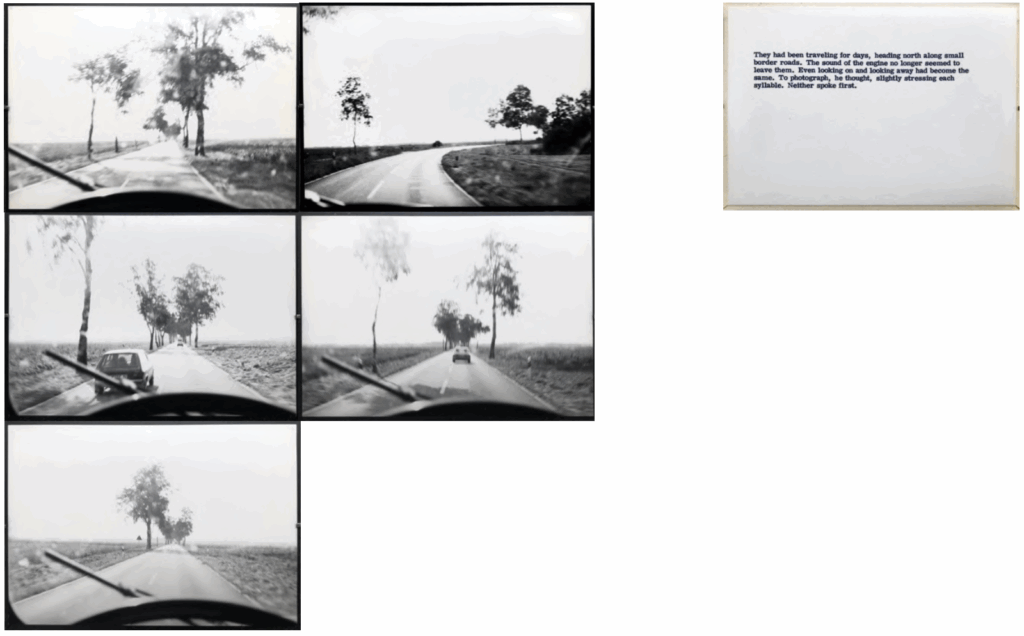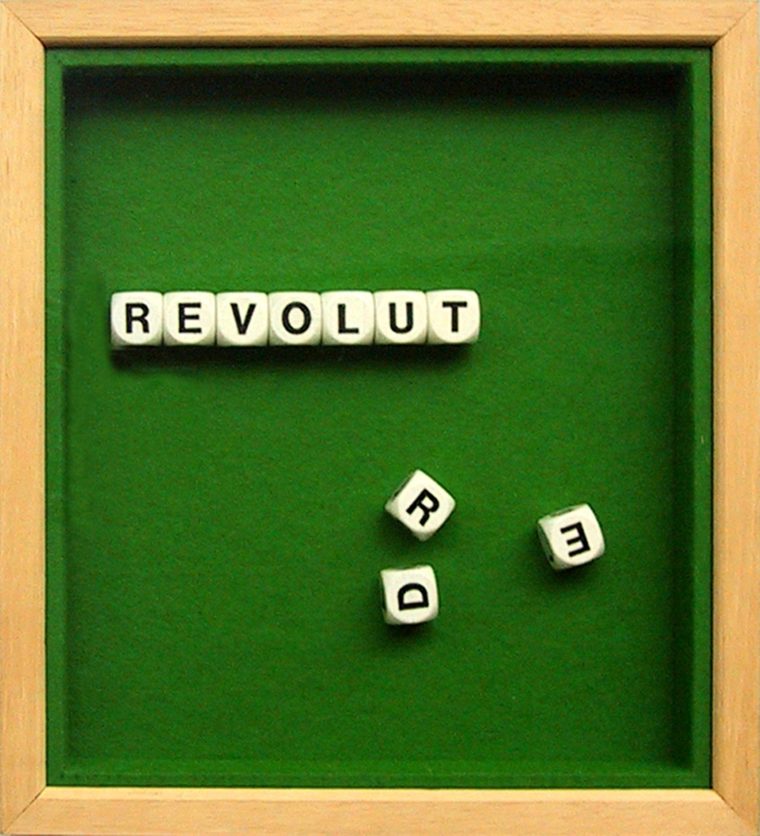Jochen Gerz, Revolut…
06.06 — 24.07.2025
A conceptual artist of German origin, Jochen Gerz (born in 1940) has built his work around the themes of separation and memory. After studying philology, sinology, and prehistory, Gerz began a brief career as a writer, which he ended after concluding that modern poetry was a dead end. A self-taught artist, he then turned to the visual arts to develop a radical critique of language and image in a society dominated by mass media. Since 1966, when he settled in Paris, Gerz has questioned modern communication and its channels through public performances, installations, videos, editions, and photographs.
Started in the early 1970s and continued over a decade, the Photo-Texts series takes the form of juxtaposed images whose subjects appear unremarkable at first glance: a woman walking a dog by a river, a landscape seen through a car windshield, a tree-lined path in a park, and so on. Each black-and-white photograph is taken in the same place, from the same angle, a few seconds apart (or following longer ellipses), capturing tiny changes: the passage of time rather than an event. A text accompanies the images, like the voice-over of a film. It does not describe or caption but instead invents a poetic fiction, a story. Confronted with the apparent absence of a message, the viewer is invited to reconsider their relationship with photography and text, to question their expectations of a work of art: “Perhaps that is why image and text appear simultaneously in my work, explains the artist. Their impossible addition creates, under the pretense of clarity, a dismissal between the gaze-as-hunter and its object on the wall. For once, the desire to understand or to recognize remains unanswered: the gaze sees itself.” (Patrick Le Nouëne, “Interview with Jochen Gerz,” in Gerz, Works on Photographic Paper 1983 –86).


The editions he produced in parallel extend the reflections of the Photo-Texts, particularly emphasizing the themes of time and memory. Gerz also plays with the materiality of language and its capacity to signify, in an approach directly inherited from the visual and concrete poetry he practiced early in his career. In the edition titled Revolut… (1971; 1990), for instance, he dismantles the final letters of the word “revolution,” inscribed on small wooden dice, to evoke its meaning visually.
By the late 1980s, Gerz increasingly turned toward installing monumental works in public space. His “anti-monuments,” as he calls them, invoke collective memory and collective responsibility in the face of history through installations that subvert the very idea of commemoration. In 1990, he and his students secretly removed paving stones from the square in front of the Saarbrücken castle — formerly Gestapo headquarters, now the seat of the regional parliament. Beneath each stone, Gerz had the name of a German Jewish cemetery engraved before replacing it with the inscription symbolically turned downward. In total, 2,146 paving stones were marked and reinserted, forming The Invisible Monument.
Jochen Gerz participated in Documenta 6 and 8 and exhibited in the German Pavilion at the 37th Venice Biennale in 1976 (alongside Joseph Beuys and Reiner Ruthenbeck). His work has been featured in numerous solo and group exhibitions, as well as major retrospectives in German, European, and North American museums — including a major exhibition at the Centre Pompidou in 2002. He is represented in more than a hundred international public collections, including the Art Gallery of Ontario, Toronto; Hamburger Bahnhof – Museum für Gegenwart, Berlin; Neue Nationalgalerie, Berlin; San Francisco Museum of Modern Art; The Banff Centre, Walter Phillips Gallery, Banff; Musée d’Art Moderne de la Ville de Paris; and the Musée National d’Art Moderne, Centre Georges Pompidou, Paris.
Revolut… is his first gallery exhibition since he decided to devote himself to public commissions and outdoor projects. It brings together a significant selection of Photo-Texts and editions spanning the period from 1968 to 1990, thanks to the generous support of a family of patrons and passionate collectors.
